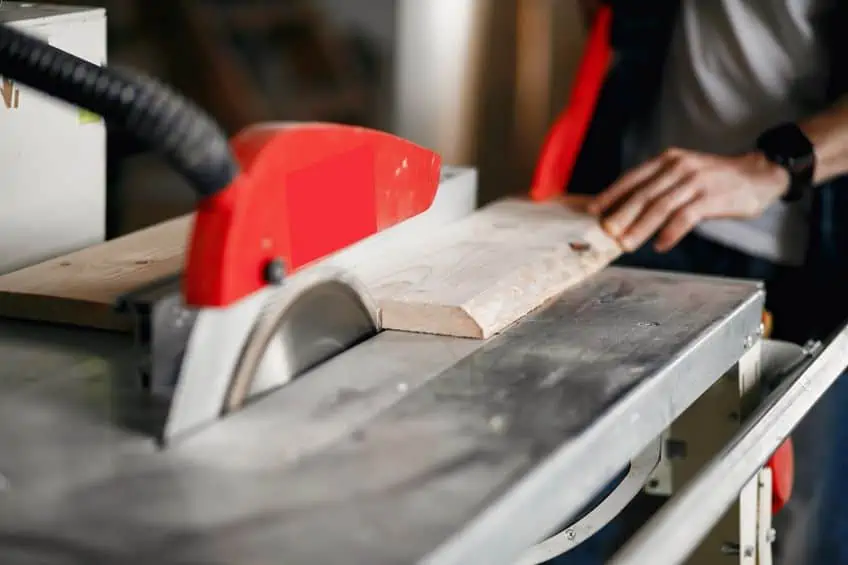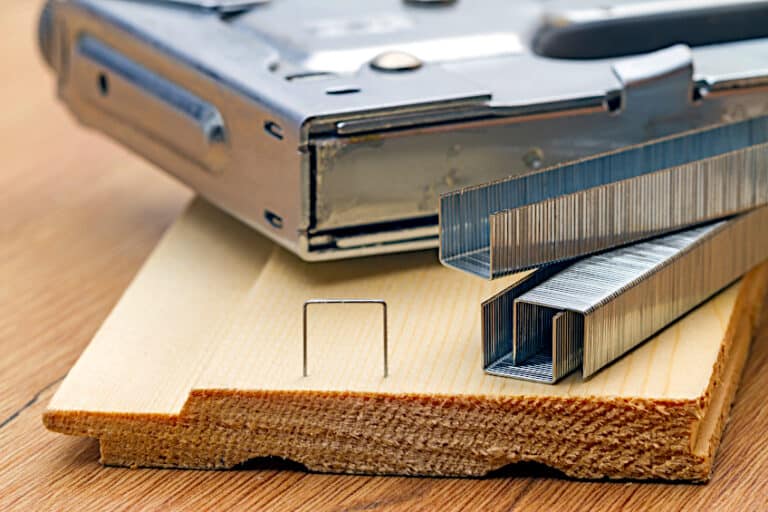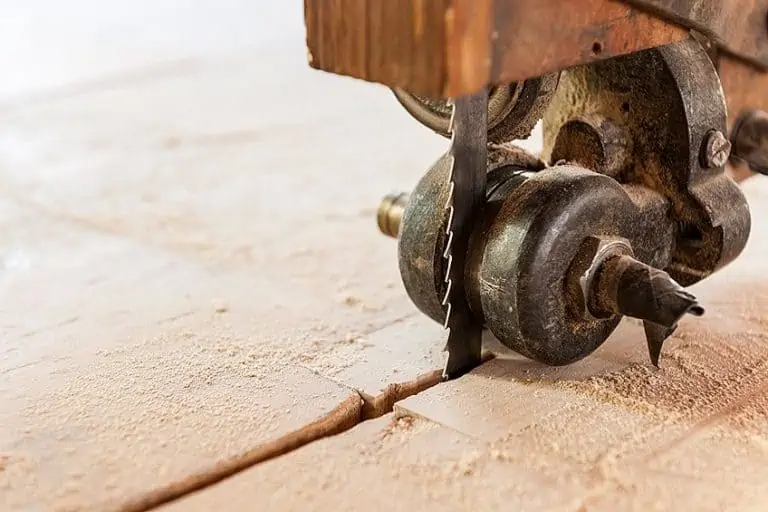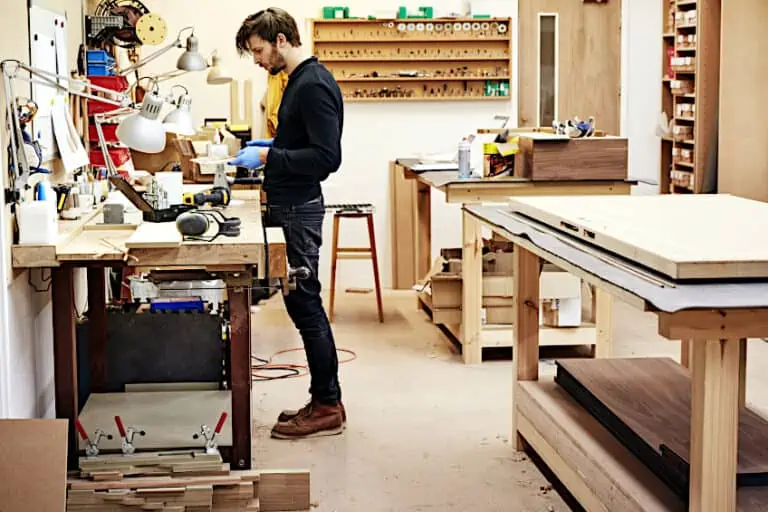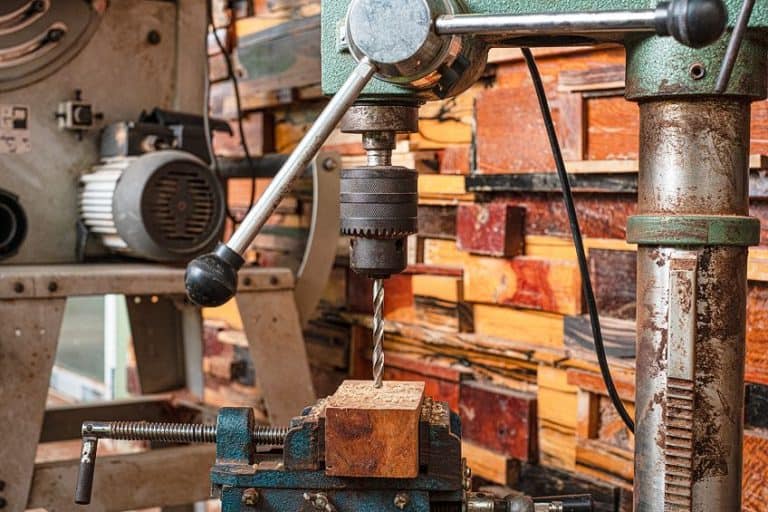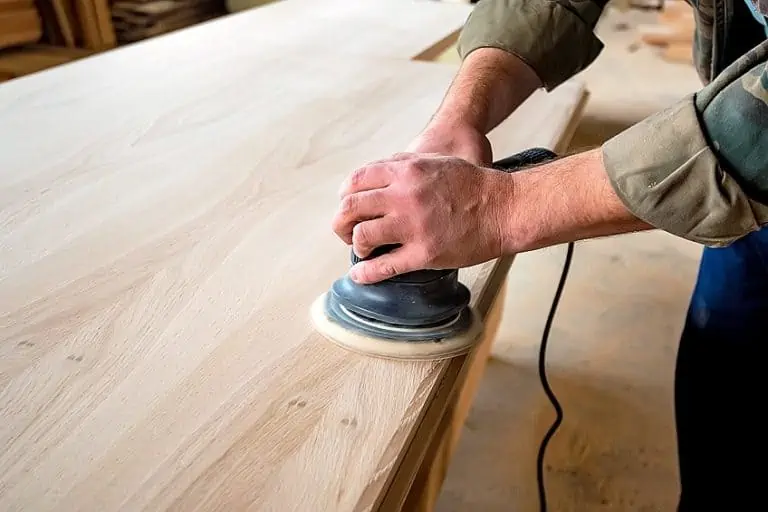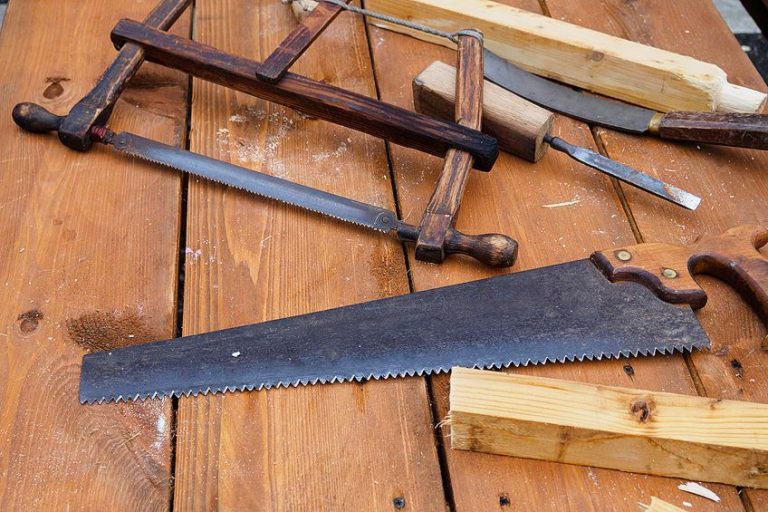How to Use a Table Saw – First Steps you Need to Know
In life, there are few tools that give you the ability to take on the world, to make something from nothing, and push yourself to the limit of your creativity. This being said, these tools are often a bit expensive and are viewed by most of us as more of an investment than an impulse purchase. A good table saw is one of these devices, and choosing the best table saw for your particular application is important, especially if you’re a newbie! Let’s have a look at what makes a good beginner table saw and what characteristics you should consider before you hit that “buy” button.
Table of Contents
What Is a Table Saw?
Although it might seem fairly self-explanatory, table saws are machines that possess far more nuance than you would initially expect. It’s difficult to say exactly when these decisions came about, but what we do know is that they provide a degree of accuracy that was unattainable before their invention. A table saw is a fixed table with a rotary blade in its center which protrudes upwards vertically, this allows you to feed material (usually wood) through the protruding blade. This cutting method ensures that you have complete control over the depth and rate of the cut, which means that denser materials can be cut without any damage to the blade itself.
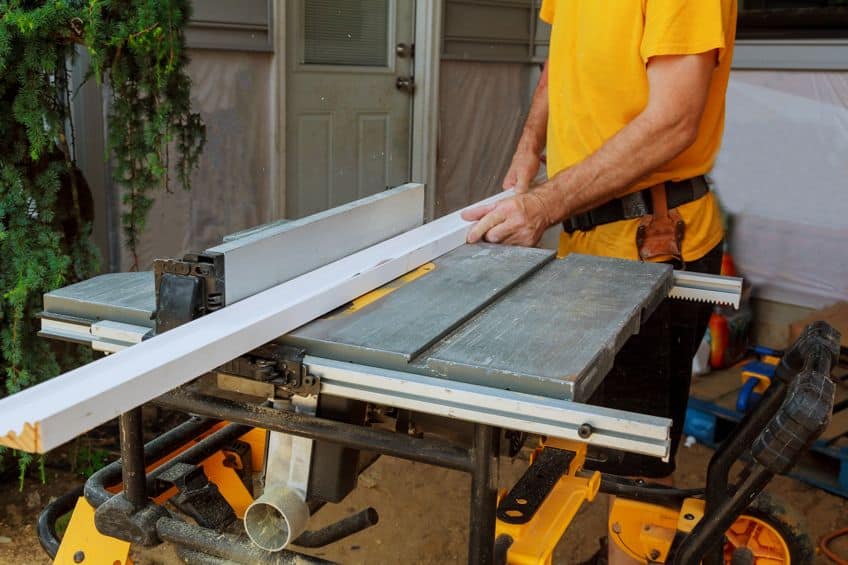
These tools are especially useful when one needs to cut larger workpieces, enabling you to manage these workpieces more efficiently by feeding them toward the blade instead of laboring over a large workpiece while trying to remain consistent regarding the depth and straightness of the cut. These devices have come a long way since they were first brought about, and one of the game-changing improvements made to them has to be the ability to manipulate the blade itself.
A while back, earlier table saws allowed you to raise or lower the table in order to manipulate the depth of the cut to your workpiece, however, modern table saws not only allow one to manipulate the blade while the table remains static, but they also come equipped with helpful additions such as chucks, X/Y axis reference plains, laser guidance, dust collection compartments, variable speed control, and electronic safety stops.
There are also various types of table saws on the market today, many of which you have probably seen in your daily life or on television or in movies.
One of the most common types of table saws for DIY enthusiasts are benchtop table saws, they are called “tabletop” saws because they can simply be placed atop an existing tabletop without the need for installation. These tabletop saws are lightweight, relatively powerful, fairly quiet, and will be more than adequate for virtually any at-home project you can think of, making them the perfect beginner table saw.
The other major type of table saw on the market which is typically used on job sites or by contractors are free-standing table saws. These are collapsible to different degrees and are equipped with their own table, legs, and typically much more powerful motors. These saws reach far higher RPMs (revolutions per minute) and although this makes them more powerful it does mean they can be quite loud and could be considered overkill for the average home environment.
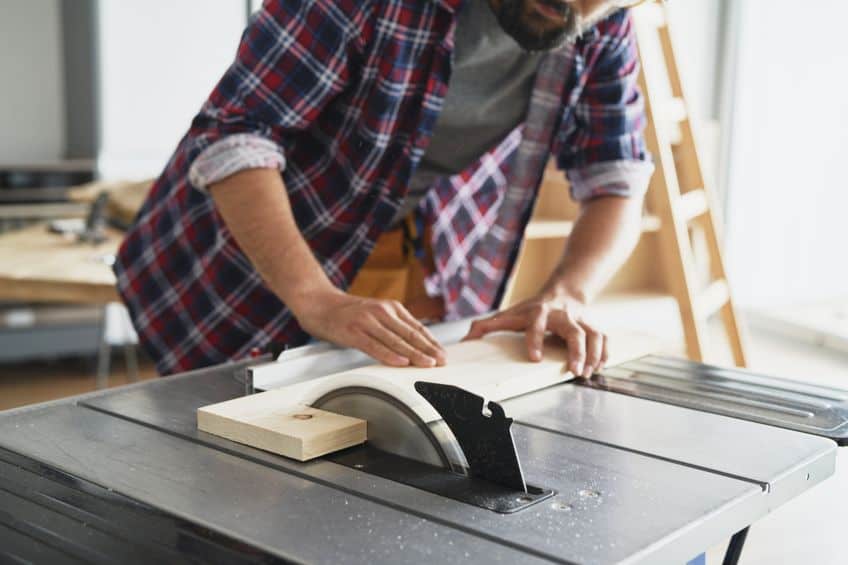
If you have never used a table saw before or you’re in the market for one, choosing a table saw that not only fits your particular application but has great value for money is important. Why? Well, these tools aren’t what most of us would consider “cheap”, and if you’re going to invest in such a robust piece of machinery, you should ensure that you are getting the best value for your money.
How to Use a Table Saw
Here is a short tutorial on how to go about using a table saw effectively. Remember that power saws in general can be extremely dangerous if you don’t use the appropriate personal protective gear. Always ensure that you follow the manufacturer’s operating instructions and ensure that all extremities are clear of any moving parts when operating your table saw.
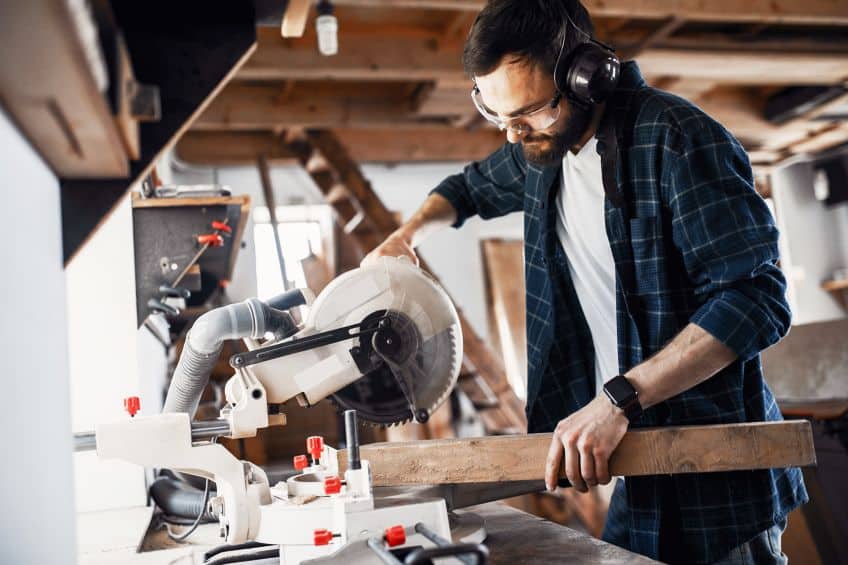
Practice Safety When Feeding
If this is your first time using a table saw, you should remember never to start a saw while the material is in contact with the blade. Additionally, always ensure that the blade is secured to the pivot point and that all the necessary guards are in place before you move. All modern saws have electric brakes or emergency stop switches which will cut all power to the motor causing the blade to stop rotating, always ensuring that these switches are in working order before attempting to feed any material through the blade.
Lastly, always ensure that you have any long sleeves or hanging items like jewelry tucked away neatly before continuing the proceeding.
Feed Material Correctly
There are many ways one can go about cutting materials when using a table saw, these techniques will allow you to create intricate workpieces with relatively simple techniques when used correctly. This being said, the two most common cuts you are likely to make with your table saw are rip cuts and cross cuts, rip cuts being used to modify the width of a given workpiece, and crosscuts being used to modify the length of the material. These cuts will require you to set up your rip fence or miter gauge for the appropriate angle of the cut (which could also depend on the size of the material you are attempting to cut).
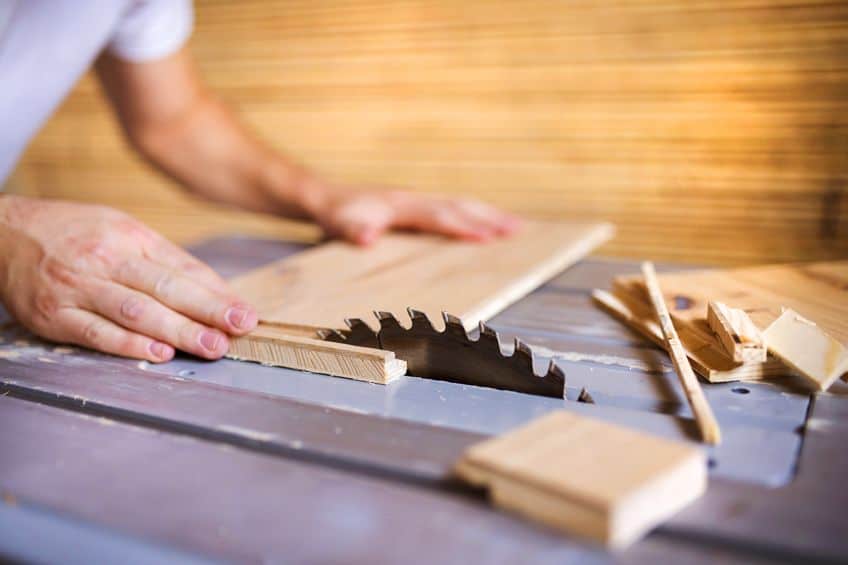
Regardless of the cut you are attempting to execute, there are few rules that you should follow when using a table saw. Always feed the material at a reasonable rate and ensure that you are not forcing the material through, rather acting as a guide while allowing your miter gauge or rip fence to keep the workpiece true during the cutting process.
Always ensure that you keep the material flat against the table surface, in addition to causing kickback, this could damage your workpiece and cutting blade under the right conditions.
Remember that your feed rate should always be consistent and passive, do not grow impatient or attempt to make cuts without the appropriate guides in place. Lastly, always use a push stick if you can help it, saving a few seconds on work time could end up causing a serious injury, therefore no matter how confident you become in your technique remember that your digits aren’t stronger than stainless steel!
What Should You Look for In a Table Saw?
There are a few things you should consider when buying a table saw for home use. Technology has come a long way and therefore many many features which used to be considered premium additions are now considered standard. This being said, let’s have a look at some features that you should consider before clicking that buy button.
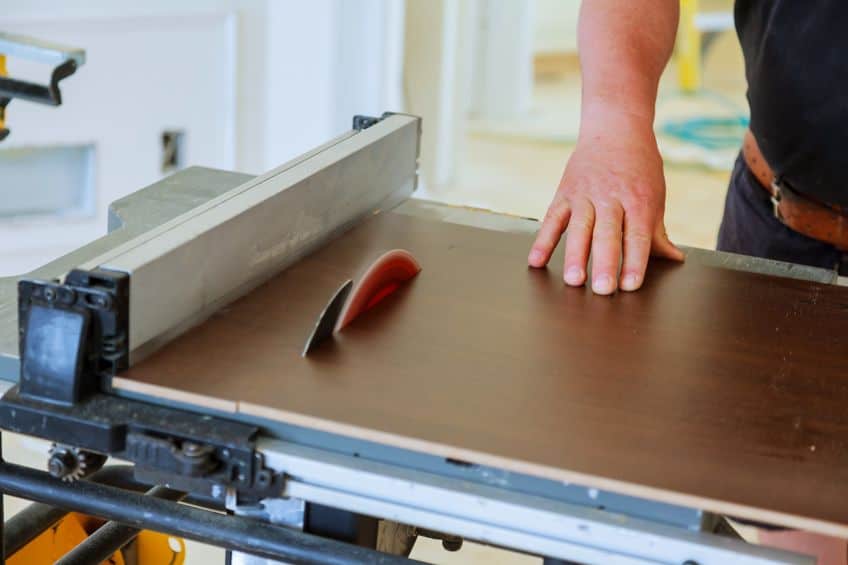
Safety Features
Whether you’re a seasoned woodworker or a novice, safety is undisputedly the most important aspect of working with a table saw. By law, there are minimum safety requirements that each device should have at the point of sale, although the quality and coverage of these features can vary considerably by the brand and price range of a given unit.
One universal safety feature that all table saws should have is a safety guard, which functions similarly to the guard on a grinding wheel by ensuring that no excess material is kicked up into your face or splintered off into your hands as the workpiece is being fed through the blade.
Another important but often less talked about safety component on a table saw would have to be the riving knife located on the opposite end of the cutting glade, this knife ensures that any wood that is stuck between the teeth of the blade is removed on each rotation while preventing the glade from dulling.
A universal safety feature that all table saws should come equipped with is a safety stop, this often comes in the form of a switch or a big red button which will force the machine to grind to halt should there be any complications in the cutting process such as injury, a workpiece that has gotten stuck in the jog, or something as simple as the motor behaving erratically. If you are a novice and feel like splurging on a unit that isn’t just great to learn on but offers premium safety features, you should consider the Sawstop brand of table saws.
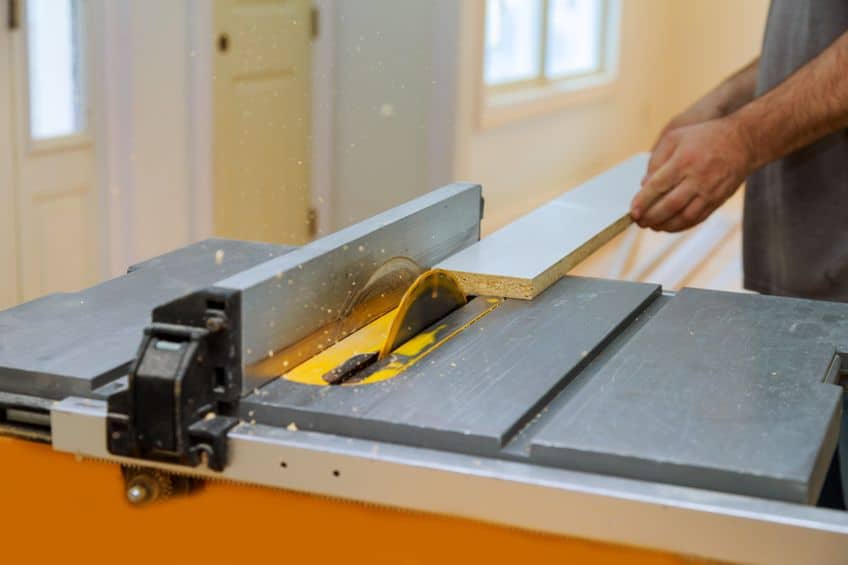
These table saws come equipped with a sensory array that detects any obstruction in the path of the cutting blade other than the workpiece and will automatically stop the rotation of the cutting wheel. This brand is objectively the best table saw for beginners as they are easy to use, are quickly installed, and put the operator’s safety first in all scenarios.
Size and Application
Safety is all well and good, but when it comes down to getting the job done the last thing you want is a machine that is underpowered. The inverse is also true, having a unit that has far more power than you need can be annoying (not to mention expensive!) as they can be quite noisy, heavy, not to mention a challenge to install and/or move around. This being said, choose a saw that suits the application you will be using it for the most.
If you will be using a table saw for light woodwork or crafting you should consider getting yourself a bench-mounted table saw, these are lightweight, easy to move around, relatively inexpensive, easy to maintain, and you’ll find yourself spoilt for choice!
At the time they were first introduced, these saws were a bit underpowered and virtually no direct aftermarket support existed from manufacturers. Fortunately, these days there are dozens of brands to choose from, all of which provide serviceable power output and have a ton of aftermarket support. This type of saw is arguably the best table saw for beginners, but that doesn’t mean it’s a one size fits all scenario. You might need something a bit more robust, something able to take a few nicks and scratches without falling apart, and it’s for this reason that job site table saws and contractor table saws exist.
Job site table saws closely resemble bench mounted table saws in their size and appearance, the difference being that job site table saws are far more powerful and are capable of supporting blades with a much larger diameter. These units will cut through solid wood, size up corner pieces for flooring, cut through the off beam, and even help adjust the odd cupboard door, if need be, and the best part? Job site table saws are portable. Their tables come equipped with lots of bells and whistles such as chucks and measuring instruments to make your day on site that much easier.
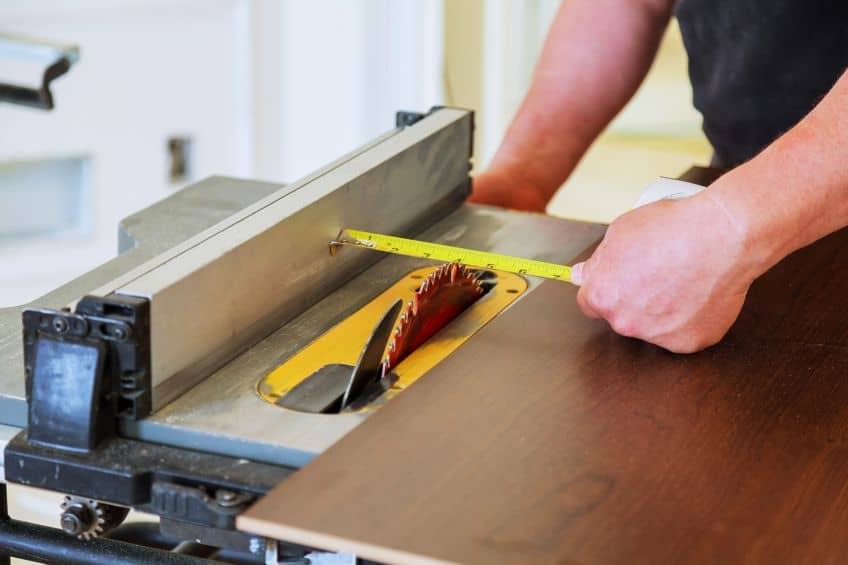
Finally, we have the contractors, these table saws are full-sized, and while they are portable, they are quite large and difficult to store/move around compared to the saws we mentioned previously. These tables are typically made of high-quality hard-wearing materials and sport extremely powerful motors. They are specifically designed to tackle large workpieces such as sizing up load-bearing pillars, roofing beams, railings, large scale flooring, and bedroom doors, while still being portable enough to move around a job site, and light enough to load into a vehicle at the end of the workday!
While this type of table saw is arguably overkill for the average weekend warrior if you’re in a position to get one you definitely won’t be disappointed with its performance, although you will need adequate space to use it as intended.
Added Features
Buying a table saw is a bit like buying a car in the way that there are different “trim levels” you can choose from. This being said, the same thought process applies, after all, do you really need a car with heated seats and a leather interior? Probably not, but these are really nice things to have if one can afford them. Unlike cars, table saws have a lot more features that you will need to consider such as table tilt, chuck variation, table composite, vibration transfer, motor size, blade mountings, and even dust collection.
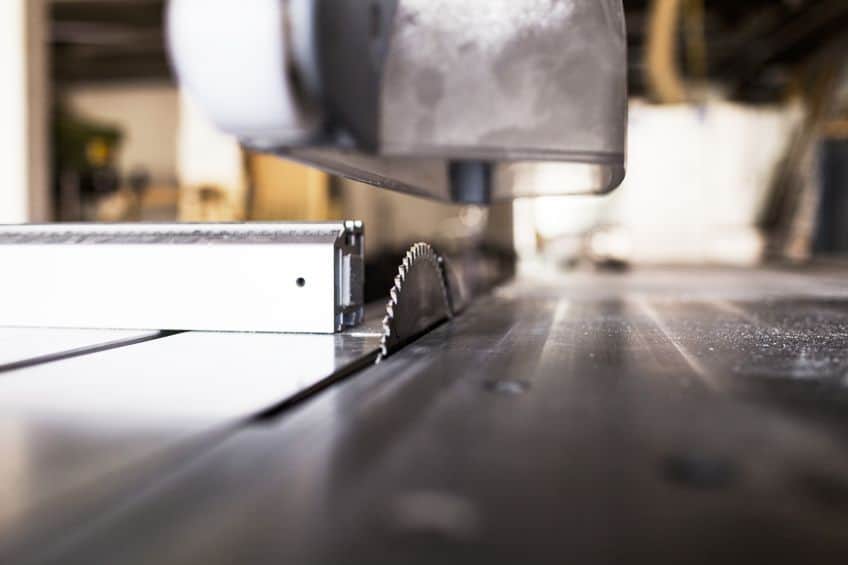
These features and more will ultimately determine the price of the table saw, and truth be told most beginners can do without them. Why? Learning this skill with too many aids can leave you a bit spoiled and less aware of what you’re doing, this is why most professionals recommend avoiding most bells and whistles when starting out.
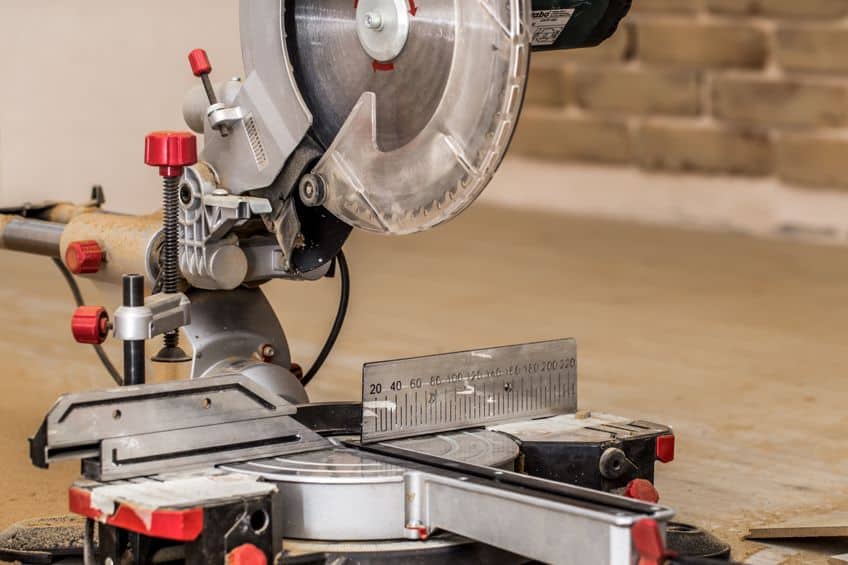
Now that you know what a table saw is, what the different types of tables saw are, what the best table saws on the market are, and how to safely operate a table saw it’s time for you to go ahead and put your newfound skills to the test. Remember to always wear the appropriate personal protective gear, ensure that your machine is in good working order, and use safety guards and guides whenever possible.
Frequently Asked Questions
What Is the Best Table Saw for Home Use?
What is the best table saw for home use? Objectively speaking the best table saw for home use would be any table saw that is lightweight, portable, easy to use, easy to maintain, and provides good value for money. A table saw for home use should be versatile and relatively inexpensive.
What Is the Purpose of a Table Saw in The Woodshop?
The reason you would use a table saw for woodworking is due to the precision and smoothness of the cut it provides. One would use a table saw for woodworking practices such as cutting dense boards, shortening beams that are too long (with precision), And even creating corner pieces for your home. You don’t just have to use a table saw for woodworking though, they can be used to cut materials like metal and plastics as well!
Can You Rip a 2×4 Board on a Table Saw?
You can rip a 2×4 board on a table saw if you have set up the rip fence correctly. You should use the correct positioning tools and apply pressure in the correct areas of the board when attempting to rip a 2×4. This being said, pressure should be applied against the rip fence, downward, and forward in order to obtain the best cut.

I have been into woodworking since 2005 and woodturning since 2011. Because of my love for wood and woodworking, I started woodhappen.com to teach other enthusiasts about how to finish and seal wood, the best woodworking tools, the different types of wood, and everything else related to woodworking! Read more about me here.

